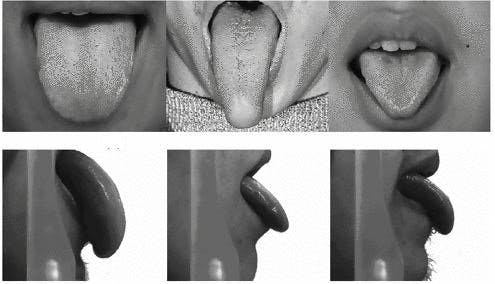In a future not so far off, your smartphone, computer, or front door may feature advanced biometric security to confirm your identity before granting access. But rather than pressing a finger or peering into a retinal scanner, authenticating yourself could one day be as easy as sticking out your tongue! Yes, tongue prints!
Believe it or not, the shape, texture and contour signatures of our tongues may provide the next evolution in digital biometric identity and security. Researchers now investigate specialized imaging devices to capture intricate tongueprints via high-resolution photos. These unique “lingual impressions” can then be leveraged for advanced identification and authentication across diverse technologies.

YOUR TONGUE TELLS A TALE
At first glance, a tongueprint identification concept may seem odd or invasive compared to fingerprints. Yet our tongues house special features making them strong candidates as digital biomarkers.
For starters, everyone’s tongue texture and shape holds exclusive characteristics only they possess. Just as no two fingerprints or snowflakes are identical, our tongues exhibit completely unique and measurable physical traits.
Additionally, a tongue offers proof of a living, consenting individual providing the scan. Sticking your tongue out for imaging requires conscious control, unlike more passive biometric sources such as fingerprints or face shape. This ensures tongueprints come from aware, participating subjects only at scan time.
Finally, tongues remain largely protected inside our mouths from external damage over time. Our fingerprints or voices can evolve after injuries or from aging effects. But short of oral trauma, our tongues stay relatively unaltered as durable “wet biometrics.”
LEVERAGING ADVANCED IMAGING TO CAPTURE TONGUEPRINTS
So what might a tongue biometric scanner entail? Researchers foretell a small imaging device that uses high resolution sensors to capture color images visualizing a tongue’s ridges, textures and shape in precise detail.
This photo then undergoes proprietary analytic software assessing unique characteristics. Metrics quantify details like tongue curvature, relative location of key landmarks, and patterns of cracks and fissures that function akin to a fingerprint. The resulting encoded biometric serves as a digital imprint for future identification confirmation.
Already prototype imaging hardware demonstrates the viability of lingual biometrics. One proposed design at China’s Nanjing University of Science and Technology combines advanced multi-spectrum illumination with fast precision optics sensitive to subtle textures.
Trials show such devices reliably document tongue characteristics that statistically vary significantly between individuals. This proves tongues offer measurable diversity on par with our vaunted fingerprints. In fact, researchers claim tongueprint verification may soon exceed conventional biometric methods in efficiency and accuracy through refinement.

THE FUTURE OF TONGUEPRINT SECURITY
Of course, more extensive research remains ahead before finding our tongues pressed against airport security screens or banking apps. However, the radical notion of tongueprint signatures has already sparked serious inquiry and investment.
Developers envision potential applications from law enforcement forensics and surveillance to firearms safety and personal device access controls. Each market segment may employ tailor-made scanning geared for efficiency or precision as needed.
Regardless the particular implementation, the tongue appears poised to claim fresh territory as an easily accessed yet well-protected biometric factor for proving we are who we claim to be. And with sufficient advancement, lingual identification may soon verify our very identities with a simple lick.
So in coming years when your smartphone prompts you to “lick here to unlock,” don’t be surprised to find your tongue taking on an entirely new role thanks to the hidden stories it can reveal. Our mouths may hold untapped data to confirm the right person gains entry – wherever increased security or restricted access enters play.



